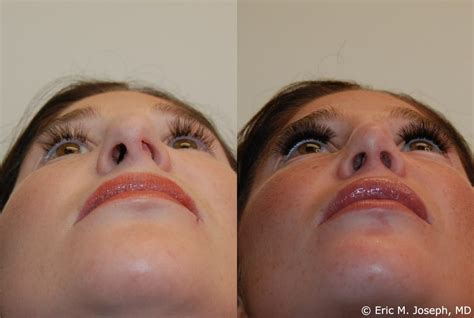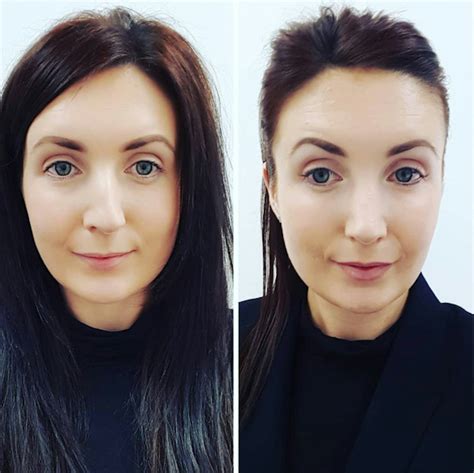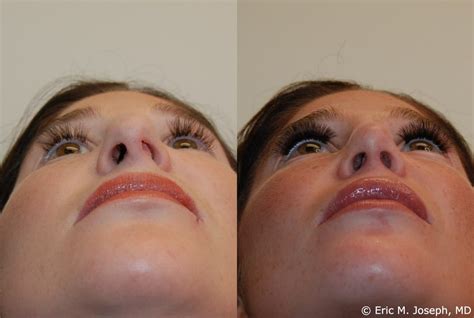Intro
Discover deviated septum surgery options, including septoplasty, turbinate reduction, and nasal septal perforation repair, to alleviate breathing difficulties and sinus issues, improving overall nasal health and function.
The importance of a properly functioning nasal septum cannot be overstated. The nasal septum, a thin wall of cartilage and bone, separates the two sides of the nasal passages, playing a crucial role in breathing, smell, and overall respiratory health. When this septum becomes deviated, either due to injury, genetic predisposition, or developmental issues, it can lead to a range of problems including nasal congestion, difficulty breathing, chronic sinusitis, and even sleep disorders. Deviated septum surgery, also known as septoplasty, is often recommended to correct this issue and restore normal nasal function. Understanding the various options and considerations for deviated septum surgery is essential for individuals seeking to alleviate their symptoms and improve their quality of life.
For many individuals suffering from a deviated septum, the prospect of surgery can be daunting. However, advancements in medical technology and surgical techniques have made septoplasty a relatively safe and effective procedure. The primary goal of the surgery is to straighten and reposition the septum to improve airflow through the nasal passages. This can significantly reduce symptoms such as nasal obstruction, frequent nosebleeds, and sinus infections. Moreover, correcting a deviated septum can also have a positive impact on sleep quality, as it can help alleviate sleep apnea and other breathing-related sleep disorders.
The decision to undergo deviated septum surgery should be made after careful consideration and consultation with an ear, nose, and throat (ENT) specialist or a plastic surgeon. These professionals can evaluate the severity of the deviation, discuss potential risks and benefits, and explain the various surgical options available. It's also important for patients to understand that while septoplasty can significantly improve nasal function, it may not completely eliminate all symptoms, especially if other underlying conditions are present. A thorough discussion with a healthcare provider can help set realistic expectations and ensure that patients are well-prepared for the procedure and the recovery process.
Understanding Deviated Septum Surgery

Deviated septum surgery, or septoplasty, involves the correction of the nasal septum to improve breathing and reduce symptoms associated with a deviated septum. The procedure typically involves the removal of the deviated portions of the septum and the repositioning of the remaining septal cartilage and bone. Septoplasty can be performed under local or general anesthesia, depending on the complexity of the procedure and the patient's preferences. In some cases, additional procedures such as turbinate reduction (to reduce the size of the turbinate bones in the nose) or sinus surgery may be performed concurrently to address other contributing factors to nasal obstruction.
Types of Septoplasty
There are several approaches to septoplasty, each with its own set of indications and advantages. The choice of technique depends on the severity of the deviation, the patient's overall health, and the surgeon's preference. Some of the most common types of septoplasty include: - **Endoscopic Septoplasty**: This minimally invasive technique uses an endoscope (a thin, flexible tube with a camera and light) to visualize the septum and remove the deviated portions. Endoscopic septoplasty is often preferred for its smaller incisions and potentially quicker recovery times. - **Traditional Septoplasty**: This approach involves making an incision on one side of the nose to access the septum. While it may require a slightly longer recovery period than endoscopic septoplasty, traditional septoplasty can be effective for more complex deviations. - **Limited Septoplasty**: This technique is used for less severe deviations and involves the removal of only the most deviated portions of the septum, preserving as much of the normal septal structure as possible.Benefits of Deviated Septum Surgery

The benefits of deviated septum surgery are numerous and can significantly improve the quality of life for individuals suffering from a deviated septum. Some of the key advantages include:
- Improved Breathing: By correcting the deviation, septoplasty can enhance airflow through the nasal passages, reducing nasal congestion and making it easier to breathe.
- Reduced Sinus Infections: A deviated septum can obstruct the normal drainage of the sinuses, leading to chronic sinusitis. Septoplasty can help restore proper sinus function and reduce the frequency of sinus infections.
- Enhanced Sleep Quality: By improving breathing and reducing nasal obstruction, deviated septum surgery can help alleviate sleep apnea and other sleep-related disorders, leading to better sleep quality and overall health.
- Decreased Nosebleeds: A deviated septum can cause the nasal septum to dry out, leading to frequent nosebleeds. Correcting the deviation can help reduce the occurrence of nosebleeds.
Risks and Complications
While septoplasty is generally considered safe, as with any surgical procedure, there are potential risks and complications to be aware of. These can include: - **Bleeding and Hematoma**: Excessive bleeding during or after the surgery can lead to the formation of a hematoma, which may require additional treatment. - **Infection**: As with any surgical procedure, there is a risk of infection with septoplasty. Antibiotics are often prescribed post-operatively to minimize this risk. - **Nasal Septal Perforation**: This is a rare complication where a hole develops in the septum. It can usually be treated with additional surgery. - **Change in Nasal Appearance**: While septoplasty is not primarily a cosmetic procedure, it can occasionally result in a slight change in the appearance of the nose.Preparation and Recovery

Proper preparation and understanding of the recovery process are crucial for a successful outcome. Here are some key points to consider:
- Pre-Surgical Preparation: Patients are usually advised to stop taking certain medications, such as aspirin and ibuprofen, which can increase the risk of bleeding. Smoking should also be avoided, as it can impair healing.
- Surgery Day: The procedure is typically performed on an outpatient basis, allowing patients to return home the same day. It's essential to have someone accompany the patient to drive them home and provide initial care.
- Post-Operative Care: Patients are advised to rest, avoid strenuous activities, and keep their head elevated to reduce swelling. Pain is usually managed with prescription medication, and nasal saline sprays can help keep the nasal passages moist and promote healing.
- Follow-Up: Regular follow-up appointments with the surgeon are important to monitor healing, remove any nasal packing, and address any concerns or complications.
Cost and Insurance Coverage
The cost of deviated septum surgery can vary widely depending on factors such as the surgeon's fees, the complexity of the procedure, and the location where the surgery is performed. Many health insurance plans cover septoplasty when it is deemed medically necessary, meaning it is performed to correct a deviated septum that is causing significant symptoms. However, coverage can vary, and it's essential for patients to check with their insurance provider before undergoing the procedure.Alternative Treatments

While septoplasty is often the most effective way to correct a deviated septum, there are some alternative treatments and management strategies that can help alleviate symptoms. These include:
- Nasal Decongestants: Over-the-counter decongestants can provide temporary relief from nasal congestion.
- Nasal Steroids: Prescription nasal steroid sprays can reduce inflammation and swelling in the nasal passages.
- Saline Nasal Sprays: These can help moisturize the nasal passages and thin out mucus, making it easier to breathe.
- Breathing Exercises: Certain breathing exercises and techniques can help improve nasal breathing and overall respiratory function.
Home Remedies
Several home remedies can also provide relief from the symptoms of a deviated septum. These include: - **Humidifiers**: Using a humidifier can add moisture to the air, helping to keep the nasal passages moist and reduce congestion. - **Elevating the Head**: Sleeping with the head elevated can help reduce congestion by facilitating the drainage of mucus. - **Steam Inhalation**: Inhaling steam from a bowl of hot water or a steam inhaler can help loosen mucus and reduce nasal congestion.Conclusion and Next Steps

For individuals considering deviated septum surgery, it's essential to approach the decision with a clear understanding of the procedure, its benefits, and its potential risks. By consulting with a healthcare provider and discussing personal health goals and expectations, patients can make an informed decision that is right for them. Whether through septoplasty or alternative management strategies, taking proactive steps to address a deviated septum can significantly improve quality of life, enhance breathing, and reduce the frequency of related health issues.
We invite readers to share their experiences or ask questions about deviated septum surgery and its alternatives. Your feedback and insights can help others who are navigating similar health concerns. Please feel free to comment below, and consider sharing this article with anyone who might benefit from this information.
What are the main symptoms of a deviated septum?
+Nasal congestion, difficulty breathing, frequent nosebleeds, and sinus infections are common symptoms associated with a deviated septum.
Is deviated septum surgery painful?
+While septoplasty can cause some discomfort, pain is usually manageable with medication. The level of pain can vary from person to person.
How long does it take to recover from deviated septum surgery?
+Recovery times can vary, but most people can return to their normal activities within 1-2 weeks after surgery. It may take several weeks for the nasal passages to feel completely normal again.
